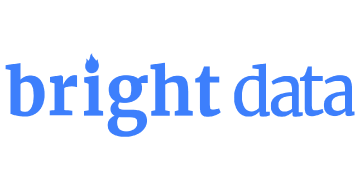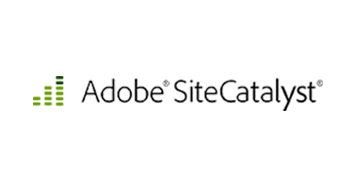
| Starting price | $199/mo |
|---|---|
| Pricing model | Quotation based |
| Free Trial | Yes, 7 days |
| Free Version | Yes |
Get valuable insights into your website’s performance with the best web analytics software. With our top products, you can track website traffic, user behavior and engagement metrics to optimize your online presence. SaasGenius helps you find the best value web analytics software for your business needs.
Tracking and analyzing your website's performance is critical to success. Our top choices are the most comprehensive and reliable web analytics software solutions on the market. We evaluated each software based on its features, ease of use, and value for money. Read on to find the perfect web analytics software for your business.

| Starting price | $199/mo |
|---|---|
| Pricing model | Quotation based |
| Free Trial | Yes, 7 days |
| Free Version | Yes |

| Starting price | $119.95/mo |
|---|---|
| Pricing model | Per User |
| Free Trial | 7-day |
| Free Version | Yes (limited functionality) |

| Starting price | Varies |
|---|---|
| Free trial | Yes, 3 days |
| Free version | No |

| Starting Price | $99/month |
|---|---|
| Pricing Model | Subscriber based |
| Free Trial | Yes |
| Free Version | No |

| Starting price | Varies |
|---|---|
| Free trial | Yes, 14 days |
| Free version | No |

| Starting Price | Contact for price |
|---|---|
| Pricing Model | Subscriber based |
| Free Trial | No |
| Free Version | No |
Web analytics software is a powerful digital intelligence tool that tracks, measures, and analyzes website traffic, user behavior, and engagement metrics in real-time. These platforms collect comprehensive data about how visitors interact with your website, providing actionable insights into website performance, user experience optimization, and conversion rate improvements.
Modern web analytics solutions go beyond basic traffic counting. They offer sophisticated features like user journey mapping, behavioral analysis, conversion funnel tracking, and predictive analytics. Marketing teams, digital analysts, UX designers, and optimization specialists rely on web analytics software to make data-driven decisions that directly impact business growth and user satisfaction.
Unlike traditional marketing analytics software, web analytics platforms focus specifically on website and digital property performance, offering deeper insights into user behavior patterns and website optimization opportunities.
The leading web analytics platforms deliver a comprehensive suite of features designed to transform raw data into actionable business intelligence. These tools have evolved significantly from simple traffic counters to sophisticated data, reporting, and analytics software that powers modern digital strategies.
It enables instant visibility into visitor activity, traffic spikes, and content performance as they happen. This feature proves invaluable during marketing campaigns, product launches, or crisis management situations.
It captures detailed visitor interactions, including clicks, scrolls, time spent on pages, and navigation patterns. Advanced platforms offer heatmap functionality and session recordings to visualize exactly how users engage with your content.
This identifies where prospects drop off in your sales process, revealing optimization opportunities that can significantly impact revenue. This feature works seamlessly with sales analytics software to provide complete customer journey insights.
It allows businesses to analyze different user groups based on demographics, behavior, traffic source, or custom criteria. This granular analysis enables personalized marketing strategies and improved user experiences.
This tracks the complete customer journey across various touchpoints, providing clarity on which marketing channels drive the most valuable traffic and conversions.
This dashboard empowers teams to build tailored reporting interfaces that highlight the metrics most critical to their specific business objectives.
Organizations implementing robust web analytics solutions typically experience significant improvements across multiple performance indicators:
| Business Impact Area | Typical Improvement | Measurement Period |
|---|---|---|
| Conversion Rate | 15-25% increase | 3-6 months |
| User Engagement | 20-35% improvement | 2-4 months |
| Marketing ROI | 10-40% optimization | 6-12 months |
| Page Load Speed | 15-50% faster | 1-3 months |
| Customer Retention | 10-20% improvement | 6-12 months |
The web analytics landscape encompasses various specialized solutions, each designed to address specific business needs and analytical requirements. Understanding these categories helps organizations select the most appropriate tools for their digital strategy.
Comprehensive solutions like Google Analytics and Adobe Analytics provide broad coverage of website metrics, user behavior, and conversion tracking. These platforms excel at delivering holistic insights across large websites and complex digital ecosystems.
Privacy-first solutions, such as Simple Analytics, have gained popularity as organizations prioritize user privacy and regulatory compliance. These platforms offer essential analytics without personal data collection, appealing to privacy-conscious businesses and European organizations subject to GDPR requirements.
Platforms like Hotjar and FullStory focus specifically on user behavior visualization through heatmaps, session recordings, and user feedback tools. These solutions complement traditional analytics by showing how users actually interact with website elements.
Specialized platforms designed for online retailers offer enhanced product performance tracking, shopping behavior analysis, and revenue attribution. These tools integrate seamlessly with e-commerce platforms to provide retail-specific insights.
Large organizations often require business intelligence analytics software that can handle massive data volumes, complex reporting requirements, and advanced segmentation capabilities. These enterprise-grade solutions offer sophisticated data processing and custom integration options.
Successful web analytics implementation requires focus on metrics that align with business objectives rather than vanity metrics that don’t drive meaningful insights. The most valuable KPIs fall into several critical categories:
Successful web analytics deployment requires strategic planning, proper configuration, and ongoing optimization. Organizations that follow established best practices typically achieve faster time-to-insight and more accurate data collection.
Goal Definition should precede tool selection. Clearly articulate what business questions your analytics implementation needs to answer, whether focusing on lead generation, e-commerce sales, content engagement, or brand awareness metrics.
Data Governance establishes protocols for data collection, storage, and access. This includes privacy compliance measures, data retention policies, and user consent management systems.
Custom Event Tracking enables measurement of specific user interactions that standard analytics packages might miss, such as video plays, document downloads, or form submissions.
Cross-Domain Tracking ensures accurate user journey measurement across multiple websites or subdomains within your digital ecosystem.
Enhanced E-commerce Tracking provides detailed product performance data, shopping behavior insights, and revenue attribution for online retailers.
Integration Planning connects web analytics data with CRM systems, email marketing platforms, and other data management software to create comprehensive customer profiles.
Regular Audit Schedules identify data quality issues, tracking problems, or configuration changes needed to maintain accurate analytics.
Segmentation Strategy develops meaningful audience groups that provide actionable insights rather than generic website statistics.
Reporting Automation streamlines data delivery to stakeholders through scheduled reports and custom dashboards that highlight key performance indicators.
Selecting the optimal web analytics solution requires careful evaluation of business requirements, technical capabilities, and budget constraints. The decision significantly impacts data quality, insights availability, and team productivity.
Feature Completeness assessment should focus on capabilities that directly support your business objectives rather than impressive feature lists that may go unused.
Integration Capabilities determine how well the analytics platform connects with existing marketing technology stack, CRM systems, and other business tools.
Scalability Requirements consider future growth needs, increased traffic volumes, and expanding analytical complexity.
Data Ownership and Privacy policies vary significantly between providers, particularly regarding data retention, sharing practices, and compliance support.
Support and Training resources influence implementation success and ongoing platform optimization.
Web analytics software pricing models range from free platforms with basic features to enterprise solutions costing thousands monthly. The key lies in selecting solutions that provide positive ROI through improved decision-making and optimization capabilities.
Free vs. Paid Solutions: While free platforms like Google Analytics offer substantial capabilities, paid solutions often provide enhanced support, advanced features, and better data ownership terms.
Implementation Costs include setup time, training requirements, and potential consulting fees that should factor into total cost calculations.
Opportunity Cost Analysis weighs the potential revenue impact of better insights against software and implementation expenses.
The web analytics industry continues evolving rapidly, driven by privacy regulations, artificial intelligence advances, and changing user behavior patterns. Organizations planning analytics investments should consider emerging trends that will shape the landscape.
Increasing privacy regulations and consumer awareness drive demand for analytics solutions that respect user privacy while delivering actionable insights. Privacy-focused platforms gain market share as organizations seek compliance-friendly alternatives to traditional tracking methods.
AI-powered analytics platforms increasingly offer predictive insights, automated anomaly detection, and intelligent recommendations that reduce manual analysis time while improving insight quality.
Advanced analytics platforms enable real-time content and experience personalization based on user behavior patterns, demographic data, and predictive modeling.
Sophisticated user identification and journey tracking across multiple devices and platforms provide a more complete customer behavior understanding.
At SaasGenius, our comprehensive evaluation methodology ensures an objective assessment of web analytics platforms based on factors that matter most to businesses seeking data-driven growth. Our rating methodology incorporates multiple evaluation dimensions to generate our proprietary Genius Score.
Functionality Assessment examines core features, advanced capabilities, and integration options through hands-on testing and feature comparison analysis.
User Experience Evaluation considers interface design, learning curve, customization options, and overall platform usability based on real-world usage scenarios.
Performance and Reliability Testing measures platform speed, data accuracy, uptime statistics, and technical performance under various conditions.
Value for Money Analysis compares pricing structures, feature sets, and ROI potential across different platform options and pricing tiers.
Support Quality Assessment evaluates documentation quality, training resources, customer support responsiveness, and community engagement levels.
Market Position Research analyzes user reviews, industry recognition, market share data, and competitive positioning to understand platform reputation and reliability.
Our Genius Score system provides transparent, objective ratings that help businesses make informed decisions based on specific needs and budget constraints. Each evaluation incorporates extensive research, user feedback analysis, and practical testing to ensure accuracy and relevance.
The result is a comprehensive assessment that goes beyond surface-level feature comparisons to deliver insights that drive successful analytics platform selection and implementation.